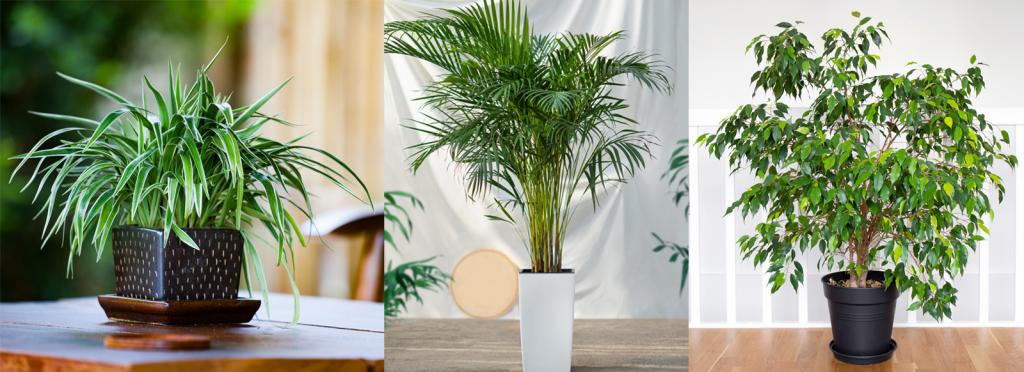
Against hidden indoor toxins are mighty air-cleaning plants—explore how nature helps us breathe better and why every home needs these green helpers.
Indoor air pollution is usually 2.5 times greater than outdoor pollution and, at its extreme, can be a hundred times worse! The deterioration of interior air quality caused by dangerous substances and materials is known as indoor air pollution. It claims about 4.1 per cent of global deaths annually.
Important indoor air pollutants are CO, NO2, SO2, Particulate Matter, ozone, and other Volatile Organic Compounds (VOCs). VOCs include benzene, toluene, ethyl benzene, and xylene. All these are emitted from cooking, wall paint, fabrics, mosquito repellants, deodorants, or even human breath.
To purify indoor air: reduce off-gassing from building materials and furnishings before they are installed. Air filtration, ionisation, activated carbon absorption, ozonation, and photocatalysis are other measures. But all these require some specifics and are energy-intensive.
At an individual level our best defense is to avoid any introduction of pollutants in the first place. Take prevention by ensuring ventilation in your rooms; and smoking restricted to outdoors-only be it of cigarette, vape, or marijuana. Use combustion appliances safely and minimize using air fresheners or strongly scented products.
Since our majority time in spent inside our houses, offices, and schools, there is an urgent need to look for solutions. Given how critical human interaction is with plants and microbes, any attempts to live in sealed buildings or remain absolutely cut off from this ecological system could have fatal consequences.
Scientists are already aware of the ghastly impacts of impure air but our country still lacks the standard protocol for measuring Indoor Air Quality (IAQ). This makes it difficult to implement any strict remedial actions.
But this problem has an obvious answer: humans must bring nature's life support system—the plants—indoors and coexist with them for their survival.

Photo caption: Spider plant, areca palm, and weeping fig — tropical houseplants that grow easily indoors, add humidity, and create a calming, green corner in any room.
Indoor plants are not only good for our health but also enhance the looks and aesthetics of our rooms. They undertake a variety of techniques which reduces pollution, like: stomata uptake, phytoremediation, and adsorption and absorption.
Yoneyama et al. (2002) reviewed the absorption and metabolism of NO2 and NH3 in 220 species including the sun- and shade-loving plants, the latter of which can be used indoors. In the research by Sadek (2012), it was reported that C. comosum varigatum, C. varigatum, and S. podophyllum removed more SOx than other plant species. He also reported that S. wallisii, F. benjamina, and C. comosum absorbed more NOx than the other tested plants.
These natural tools are affordable and low-maintenance. Some of the most effective ones you can purchase are: